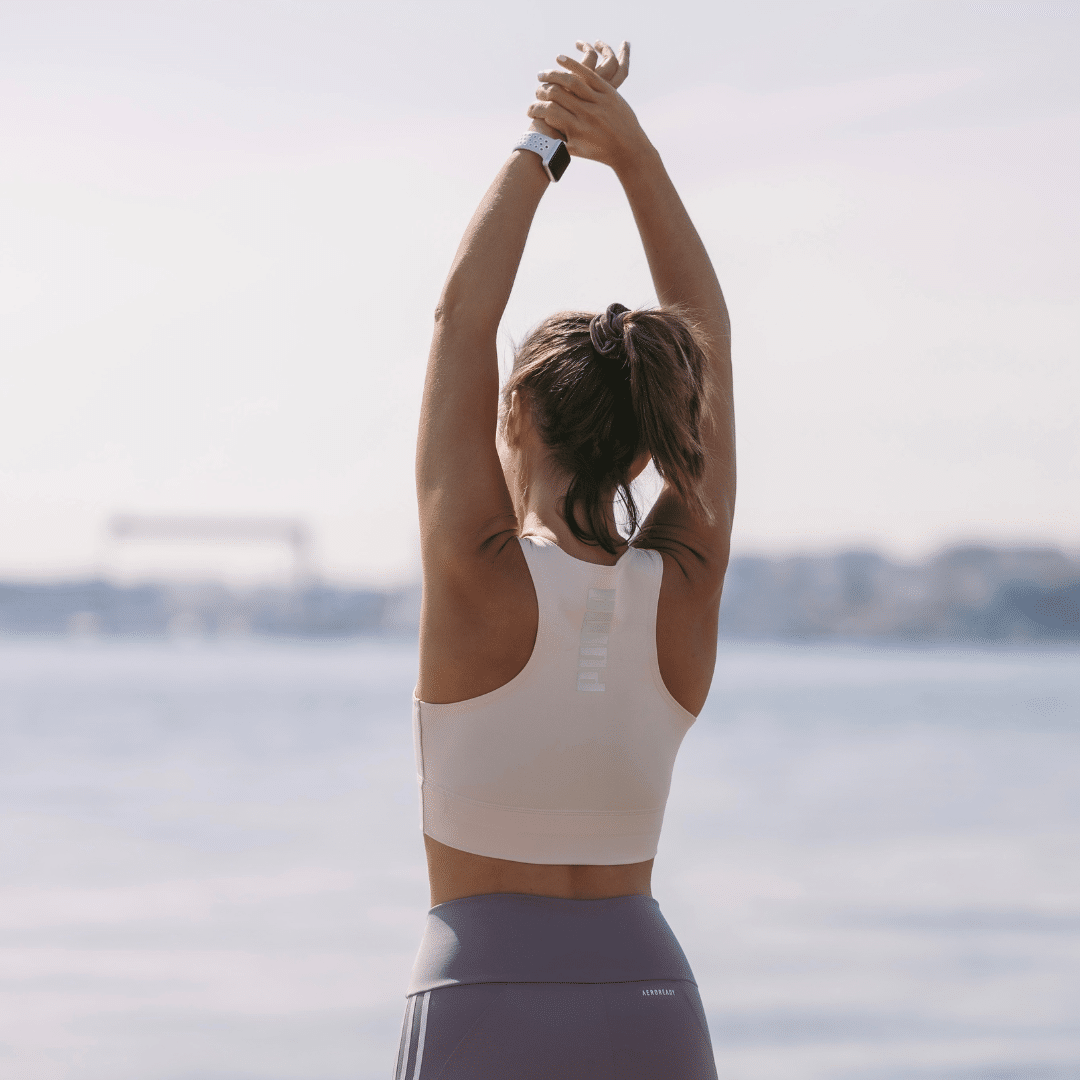
Introduction: Why Stretching for Athletes Matters
Whether you’re a weekend warrior, a competitive athlete, or just someone who enjoys staying active, stretching exercises are one of the most overlooked yet crucial components of any sports routine. Many people view stretching as an afterthought, something to squeeze in if time allows. However, the truth is, stretching for athletes can mean the difference between peak performance and chronic pain, between staying in the game and sitting on the sidelines.
When done correctly, stretching for athletes can help improve flexibility, mobility, and muscle recovery, reducing the risk of injury and enhancing overall athletic performance. In this guide, we’ll explore the science behind stretching exercises, break down the best techniques for injury prevention, and provide practical tips to keep your body in top shape.
The Science Behind Stretching Exercises
At its core, stretching is about preparing your muscles and joints for movement. When you engage in sports or physical activities, your muscles contract repeatedly, creating tension and shortening muscle fibers. Without proper stretching for athletes, this tension can lead to muscle imbalances, reduced flexibility, and increased risk of injury.
Here’s how stretching benefits athletes:
- Improves Range of Motion – Increased flexibility allows for greater movement efficiency, reducing strain on muscles and joints.
- Enhances Blood Flow – Stretching increases circulation, delivering oxygen and nutrients to muscles for quicker recovery.
- Reduces Injury Risk – A well-stretched muscle is less likely to tear or strain under stress.
- Supports Muscle Recovery – Post-workout stretching helps minimize soreness and speeds up healing.
- Optimizes Performance – Flexible muscles allow for more powerful movements and better overall athletic function.
Now that we understand why stretching matters, let’s break down the best stretching exercises for injury prevention and sports performance.
Pre-Workout vs. Post-Workout Stretching: What’s the Difference?
Not all stretching exercises are created equal. When and how you stretch makes a big difference in performance and injury prevention. Here’s what you need to know:
Pre-Workout: Dynamic Stretching Exercises
Dynamic stretching for athletes involves active movements that take your muscles and joints through their full range of motion. These stretches help activate the muscles, increase heart rate, and improve circulation before training or competition.
Best Dynamic Stretches for Athletes:
- Leg Swings – Improves hip flexibility and activates lower body muscles.
- Arm Circles – Warms up the shoulders and improves mobility.
- High Knees – Engages core muscles and increases blood flow to the legs.
- Lunges with a Twist – Stretches the hip flexors while engaging the core and spine.
- Butt Kicks – Warms up hamstrings and improves knee mobility.
Why It Works: Dynamic stretching helps increase body temperature, activate neuromuscular pathways, and prepare the body for explosive movements.
Post-Workout: Static Stretching Exercises
After a workout, static stretching helps lengthen tight muscles, improve flexibility, and speed up recovery. These stretches are held for 20-30 seconds per muscle group and help the body cool down gradually.
Best Static Stretches for Recovery:
- Hamstring Stretch – Loosens tight hamstrings and reduces lower back tension.
- Quadriceps Stretch – Helps maintain knee flexibility and prevent strain.
- Hip Flexor Stretch – Reduces stiffness in the hips, especially for runners.
- Child’s Pose – Relaxes the spine and stretches the back muscles.
- Chest and Shoulder Stretch – Improves posture and relieves tightness from upper-body workouts.
Why It Works: Static stretching encourages muscle relaxation, enhances circulation, and prevents stiffness, all of which are essential for long-term injury prevention.
Common Myths About Stretching for Sports
With so much conflicting information, it’s easy to fall into stretching myths that do more harm than good. Let’s clear up some misconceptions:
Myth: Stretching before a workout prevents all injuries.
Fact: Stretching alone won’t prevent injuries. Proper warm-ups, strength training, and technique all play a role in injury prevention.
Myth: Holding a stretch longer means better results.
Fact: Overstretching or holding a stretch for too long can actually cause muscle fatigue, reducing performance rather than improving it.
Myth: If you’re not flexible, stretching won’t help.
Fact: Everyone can improve flexibility with consistent, targeted stretching exercises—it just takes time and consistency! Stretching for athletes is a top priority, especially when you’re not already flexible.
Stretching for Different Sports
Different sports put unique demands on the body. Here’s how to tailor your stretching exercises to your sport:
- For Runners: Focus on hip flexors, calves, hamstrings, and quads to prevent stiffness and enhance stride length.
- For Weightlifters: Prioritize shoulders, chest, hamstrings, and lower back to maintain mobility and prevent muscle imbalances.
- For Basketball Players: Emphasize ankle mobility, hamstrings, and hip flexibility for better agility and explosive movement.
- For Golfers: Stretch spinal rotation, shoulders, and hip flexors to improve swing mechanics and prevent lower back pain.
- For Soccer Players: Loosen up the hamstrings, groin, and hip flexors to enhance kicking power and reduce strain.
Take Control of Your Flexibility and Injury Prevention
Stretching isn’t just an add-on to your workout—it’s an essential part of your long-term health and performance. Whether you’re an athlete or someone who enjoys staying active, prioritizing stretching exercises can help you stay injury-free, move better, and feel stronger.
At Empire Sports Physical Therapy and Rehabilitation, the leading sports injury expert in Rockland County, we specialize in helping runners recover from injuries and prevent future issues. Our expert team will assess your condition, identify the root cause of your pain, and develop a personalized treatment plan to get you back on track.
Special Offer: Flexibility Assessment for just $19.99 this month!
As part of our commitment to keeping athletes healthy and flexible, we’re offering a Flexibility Assessment priced at only $19.99 this month. During your assessment, we will identify tight muscles and movement restrictions, create a personalized stretching and mobility plan tailored to your sport or activity level and help you improve range of motion and reduce pain before it starts.
Call (845) 675-8444 or visit Empire Sports Physical Therapy to book your flexibility assessment today! Don’t wait until pain sidelines you—move better, feel better, and perform at your best.
- Download Our Free Sports Injuries: Unlock valuable insights and actionable advice to help you prevent and manage sports injuries and flexibility.

- Book a Free Telephone Consultation: Still unsure about your next steps? Let’s discuss your concerns over the phone. Schedule a free consultation, and I’ll provide personalized advice to address your flexibility issues and other concerns.

- Visit Us for a Free Discovery Session: Ready to take action? Join us at our clinic for a complimentary discovery session. Meet our team, explore our facility, and learn how we can help you achieve an injury-free, active lifestyle.

Take control of your flexibility and injury prevention today and don’t miss anytime away from your favorite sports. Download your Free Sports Injuries Guide and schedule your consultation now!
